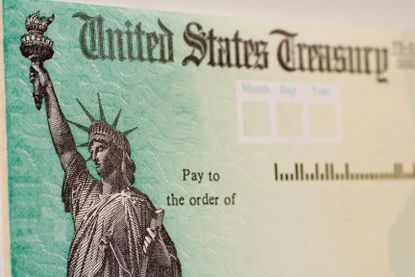Why Treasury Bills Are a Good Bet
A Treasury bill, or T-bill, is backed by the U.S. Treasury Department and one of the safest places to save your cash.


Savings rates have continued to go up this year, so if you’ve been looking for a place to store your savings and earn interest in the short-term, you’ve probably considered a high-yield savings account or CD. And while these are both good options, there’s another short-term investment alternative you should also consider: Treasury bills.
Treasury bills (T-bills) have maturity dates of less than a year, and while generally, longer-term Treasuries pay higher yields, short-term Treasury yields are currently higher. Right now, the 3-month Treasury bill rate is 5.08% while the 30-year Treasury rate is 3.84%. So, if you're looking for a risk-free way to earn interest on your cash over a short period of time, investing in a T-bill could be a good choice.
When are Treasury bills a good investment?
Treasury bills are good investments for individuals looking to make a large purchase in a short timeline, as the money will only be tied-up for at most a year. Although T-bills don’t typically earn as much as other securities, or in some cases CDs, they still offer higher returns than traditional savings accounts.

Sign up for Kiplinger’s Free E-Newsletters
Profit and prosper with the best of expert advice on investing, taxes, retirement, personal finance and more - straight to your e-mail.
Profit and prosper with the best of expert advice - straight to your e-mail.
Plus, they’re one of the safest places you can save your money, making them a great fit for conservative investors who want to avoid risk-taking but still want to earn interest.
How to buy a Treasury bill
You can either buy a Treasury directly from the government through TreasuryDirect.gov or through a broker, and the minimum purchase is $100.
To start an account with TreasuryDirect, you'll need to provide a U.S. address, Social Security number and a bank account. Afterwards, since T-bills are sold on auction, those looking to invest will need to place a bid. Once it’s accepted, it will arrive in your TreasuryDirect account.
If using a brokerage account, T-bills can also be bought through ETFs and mutual funds. If you’re looking to buy a T-bill for your IRA, you’ll need to go through a broker as you can not do so on TreasuryDirect.
How a Treasury bill works
A Treasury bill, or T-bill, is a short-term debt obligation backed by the U.S. Treasury Department. It's one of the safest places you can save your cash, as it's backed by the full faith and credit of the U.S. government. T-bills are auctioned off at a discount and then redeemed at maturity for the full amount. "Interest" on T-bills is the difference between how much you pay and how much value you get when the bill matures. The most common maturity dates for T-Bills are four, eight, 13, 26 and 52 weeks.
In addition to Treasury bills, there are other Treasury securities to invest in as well. Treasury bonds, or T-bonds, pay a fixed interest rate every six months and have the longest maturity periods, either 20 or 30 years. Treasury notes also pay a fixed rate of interest every six months but have shorter maturity periods than T-bonds, ranging from two to 10 years.
Related Content

Erin pairs personal experience with research and is passionate about sharing personal finance advice with others. Previously, she was a freelancer focusing on the credit card side of finance, but has branched out since then to cover other aspects of personal finance. Erin is well-versed in traditional media with reporting, interviewing and research, as well as using graphic design and video and audio storytelling to share with her readers.
-
-
 What’s in DeSantis’ $1.3 Billion Florida Tax Relief Bill?
What’s in DeSantis’ $1.3 Billion Florida Tax Relief Bill?DeSantis' $1.3 billion tax relief bill extends sales tax holidays and makes other tax cuts. Here's what you can buy tax-free — and when.
By Katelyn Washington • Published
-
 Letter from the Senior Digital Editor: Celebrating Pride
Letter from the Senior Digital Editor: Celebrating PrideKiplinger senior digital editor Alexandra Svokos writes at the start of Pride Month.
By Alexandra Svokos • Published

